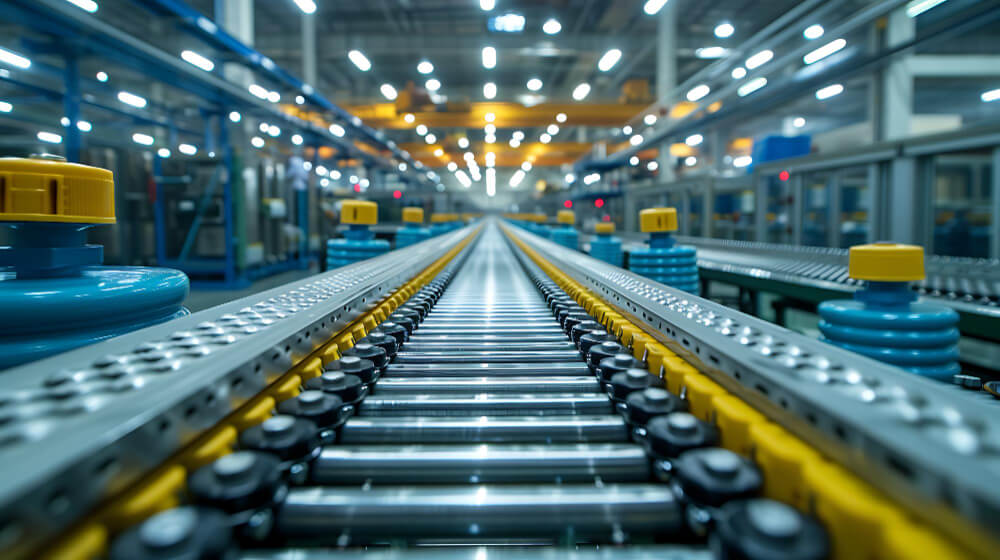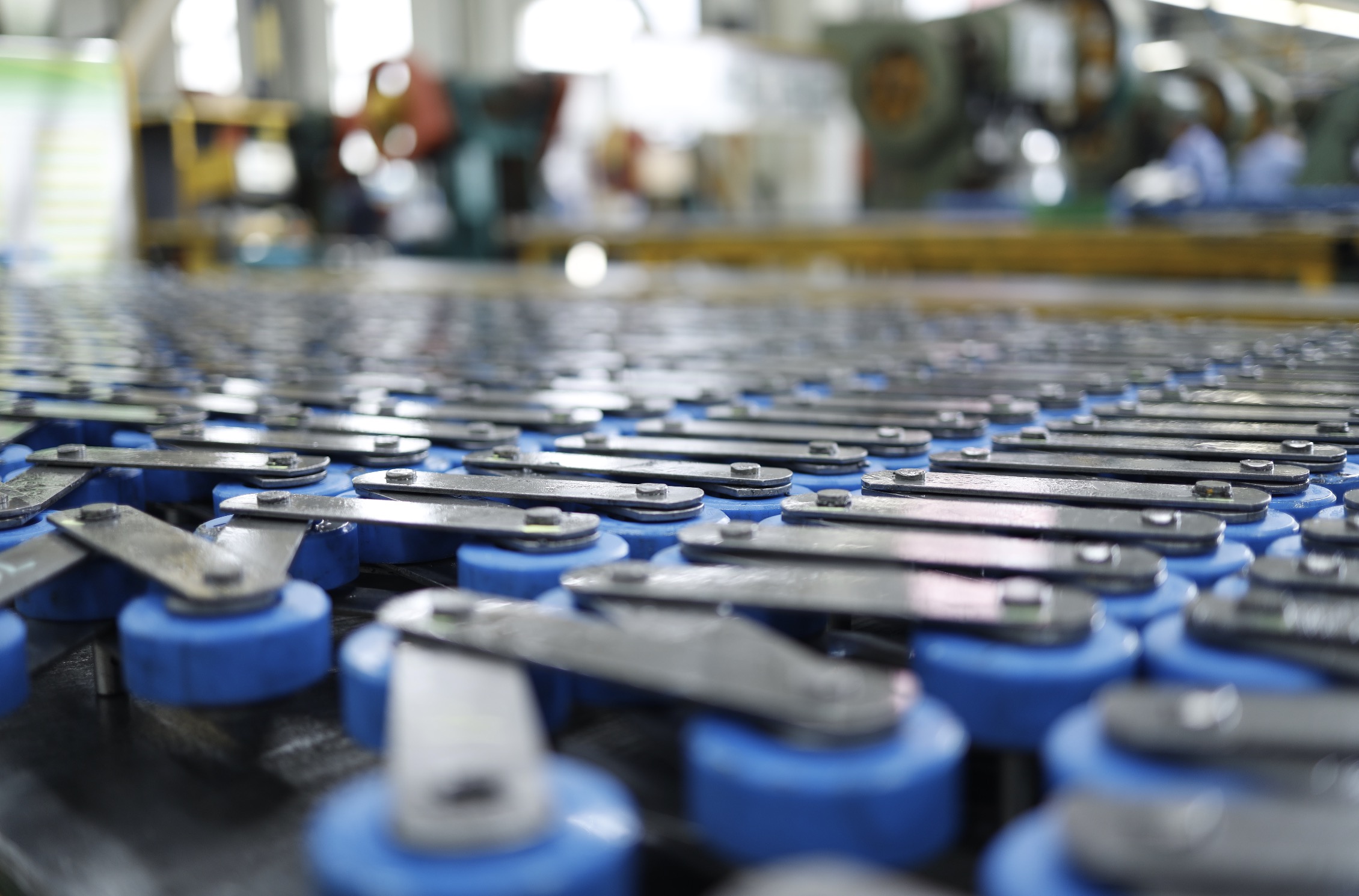Choosing the right conveyor chain involves evaluating factors like specifications, accumulation needs, rail spacing, washdown rating, environmental conditions, product transfer requirements, and elevation changes.
Each of these factors impacts the efficiency, durability, and suitability of the conveyor chain for your specific application.
By considering these aspects, you can ensure optimal performance and longevity of your conveyor system.
For more detailed insights, read the full article on selecting the right conveyor chain.
#1. Know the Conveyor Chain Specifications
What are the specifications of a conveyor chain?
Conveyor chain specifications include the chain’s size, pitch, tensile strength, and material.
Now, let’s explore the impact of conveyor chain sizes, product weight, and production rate on your selection process.
Conveyor Chain Sizes
Conveyor chain sizes must match the dimensions and load requirements of your system to ensure efficient operation.
Moreover, conveyor chain sizes typically range from small pitch chains of 1/4 inch to larger ones exceeding 3 inches.
The size must match the system’s dimensions and load requirements to ensure efficient operation.
Product Weight
The weight of the products being transported will determine the load capacity required of the conveyor chain.
This can vary significantly, from a few ounces to several tons.
Ensuring the conveyor chain can handle the maximum load is crucial for system integrity and performance.
Production Rate
The speed at which products need to be conveyed will affect the type of chain you choose, as some are better suited for high-speed operations.
Moreover, production rates can range from a few units per minute to hundreds, depending on the application.
Selecting a chain that can maintain the desired speed without compromising performance is vital for meeting production goals.
Conveyor Chain Design and Types
Different types of chain conveyors include roller chains, apron chains, and slat chains, each designed for specific applications and load types.
Conveyor chains also vary depending on the application, including:
- Palm oil chain.
- Hanging conveyor chains.
- Conveyor chain for paper industries.
- Sugar chain with bending plate.
#2. Assess Your Accumulation Needs
Understanding your accumulation needs helps in selecting a chain that can handle product buildup without causing jams.
#3. Choose Proper Rail Spacing
Proper rail spacing is crucial for maintaining the stability and smooth operation of the conveyor chain, ensuring products are transported securely.
#4. Check Washdown Rating
A high washdown rating is essential for chains used in environments that require regular cleaning, ensuring they remain corrosion-free and functional.
#5. Assess the Environment Where Your Conveyor is Used
Selecting the right conveyor chain material based on environmental factors like temperature and humidity ensures the chain’s durability and performance.
#6. Consider Product Transfer Needs
Choosing a chain with the right transfer capabilities is vital for maintaining product integrity and production efficiency.
#7. Check Elevation Requirements
Chains must be able to handle elevation changes within the conveyor system to prevent slippage and maintain product stability.
Key Takeaway
Selecting the right conveyor chain is a complex process that involves understanding detailed product specifications and assessing various environmental and operational factors.
It’s also crucial to choose reputable conveyor chain manufacturers who can provide high-quality products and expert guidance.


